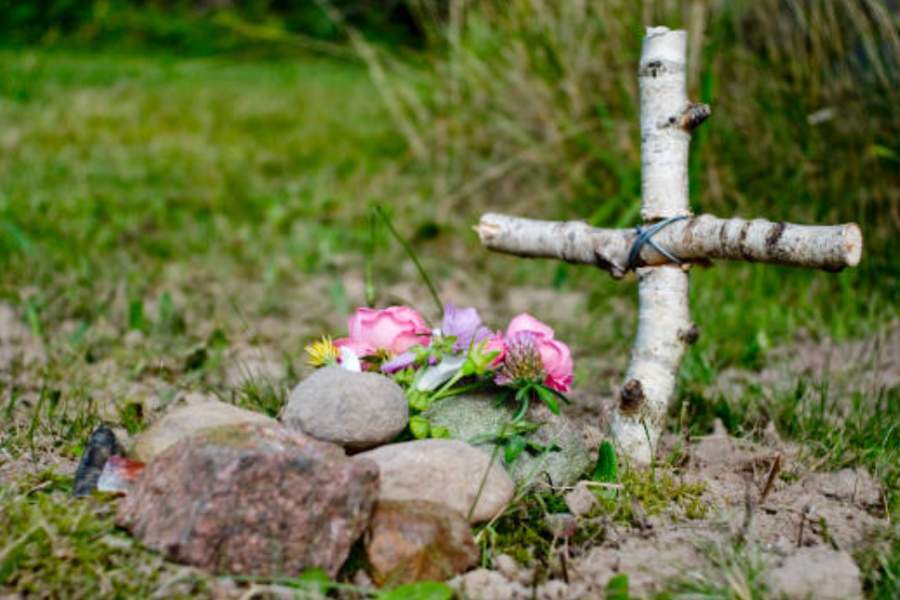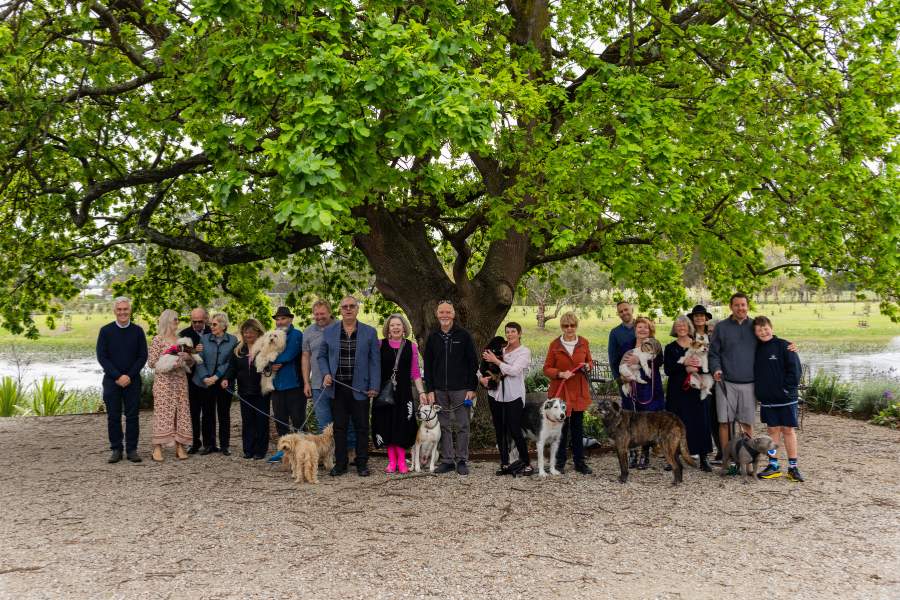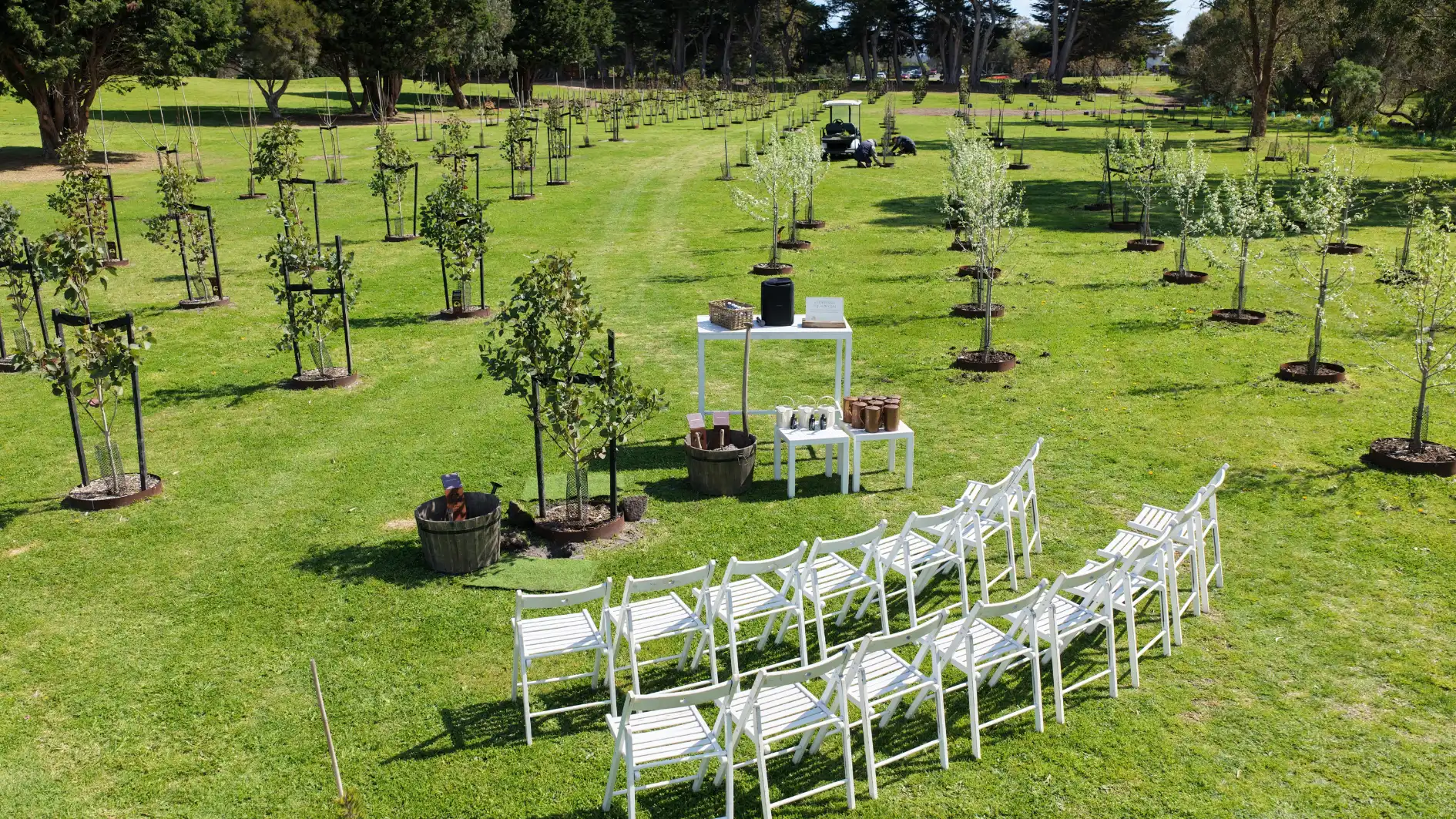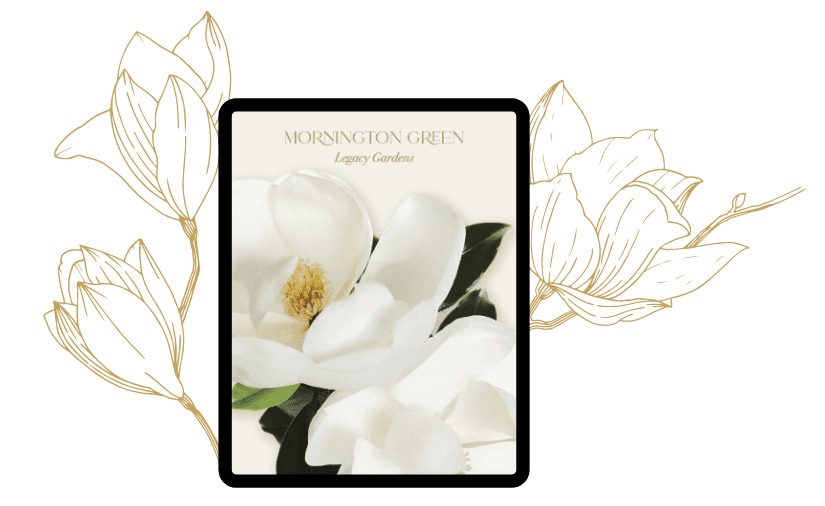
How To Bury A Cat In Australia: A Comprehensive Guide
The heartbreak from losing a much-loved cat makes choosing their final resting place a deeply personal decision. A backyard burial is a popular option for Australian pet owners to lay their cats to rest however not everyone owns a backyard and most people live in their homes for only about 10 years on average. We provide this guide to assist you through the steps to bury a cat in Australia while considering legal aspects and safety measures and examine other options such as cremation and Living Legacy Tree memorials.
Key Insights – Burying a Cat in Australia:
1. Backyard Burial is Usually Legal: Most Australian regions allow backyard cat burial but local laws differ so it is essential to verify with local councils first.
2. Safe Burial Practices Matter: Doing correct burial methods through appropriate location selection and proper practices helps prevent health hazards and environmental damage.
3. Consider Alternatives: People who do not have yard space or desire a permanent memorial can benefit from cremation or the Living Legacy Tree option.
Tools and Materials You Will Need To Bury A Cat In Australia

Start the burial process by first gathering all required tools and materials. Being prepared will make the whole process easier:
1. Digging Tools: For digging the grave you will need a sturdy shovel or spade and gardening gloves to protect your hands.
Subscribe for More Insights
2. Biodegradable Covering: You should wrap your cat’s body using a natural cloth made of cotton or linen or place it inside a cardboard pet coffin. Non-biodegradable materials like plastic delay the decomposition process.
3. Marker or Memorial Item: (Optional) A river stone, wooden cross, plant or plaque may serve as a grave marker.
4. Optional Supplies: You may use a tarp or wheelbarrow along with additional topsoil for covering the ground with mud. Prepare to wash up after the burial with a bucket of water and cleaning tools.
Step-by-Step On How to Bury Your Cat at Home

If you decide on a home burial for your cat, below are the steps to follow for a proper burial:
1. Check Local Regulations: Before anything else, contact your local council or look up their guidelines on pet burial. While home burial is widely allowed, some municipalities have specific rules on where or how it can be done.
Make sure there are no local restrictions and that you’re meeting any requirements (for example, some councils might specify minimum burial depth or distance from waterways).
2. Choose a Suitable Burial Site: Pick a spot on your property that is away from any water sources (creeks, wells) and away from vegetable gardens or other food-growing areas. This prevents any potential contamination of water or food. Choose a spot with good drainage (avoid places that get waterlogged) so the grave doesn’t fill with water. If possible, select a peaceful, shady area of the yard that won’t be disturbed and where other pets or children won’t dig. This can be under a favorite tree or a flowerbed (ornamental plants only, not edible plants).
3. Prepare the Grave (Depth and Size): Dig a hole at least 1 metre (about 3 feet) deep. This depth is recommended to ensure no other animals can catch scent and dig up the remains. In some areas, advice ranges from about 0.6 m to 1 m; deeper is always better to be safe. Make the hole large enough for your cat’s body or the container you’re using. For an average cat, a hole roughly 60 cm wide by 60 cm long (2×2 feet) and 1 m deep is usually sufficient. Pile the soil to one side on a tarp or in a wheelbarrow – you’ll need it to refill the grave. Be cautious as you dig and take breaks if needed; digging can be physically and emotionally taxing
4. Prepare Your Cat’s Body: You may wish to place your cat in a small cardboard pet casket or simply wrap them in a favorite blanket or a piece of natural fabric. Using a biodegradable material is important – cotton, wool, or linen will decompose naturally. Avoid plastic bags or anything airtight, as those can slow decomposition and are not environmentally friendly. This step is very personal; some people tuck a letter, a toy, or a photo with their catl – you can include a memento if it feels right, but avoid anything that won’t break down in the soil.
5. Lay Your Cat to Rest: Gently place your cat’s wrapped body into the bottom of the grave. You can take a moment for a personal goodbye or even hold a small ceremony if you want. This might involve saying a few words, placing flowers, or whatever feels appropriate to honor your pet. Ensure that the body is laid to rest in a respectful posture. This moment can be very emotional – it’s okay to take your time.
6. Refill and Seal the Grave: Begin refilling the hole with the soil you removed. It’s a good idea to first cover your cat with a layer of soil, then you can add a layer of heavy stones or a paving slab on top before filling the rest of the soil in – this further deters scavengers from digging. Fill the grave completely with soil, mounding it up slightly (soil will settle over time). Tamp down the soil firmly with the back of the shovel or your feet as you go, to eliminate air pockets. Continue adding soil until the grave is filled and the surface is level or slightly raised.
7. Mark the Gravesite (Optional): You can place a large stone or a paver on top, plant a shrub or flowers, or install a small memorial plaque. This not only helps you remember the spot, but also avoid anyone from accidentally digging there in the future. Some people choose to plant a tree or rosebush as a living memorial over the grave – just remember not to plant edible plants directly in that soil.
Performing a home burial can be physically and emotionally challenging, so consider asking a friend or family member for help if you are feeling overwhelmed. Take breaks if you need to, and don’t rush the process. What matters most is that you are laying your cat to rest with love and care.
Legal and Safety Considerations for Cat Burial In Australia

You’re usually allowed to bury a cat at home in Australia, but there are a few things to keep in mind to make sure everything’s done respectfully and based on regulations. Most councils in Australia allow you to bury your cat on your property, but the rules can be a bit different when it comes to things like how deep you have to dig and where you can’t dig (usually somewhere at least one metre from any water source). Just give the local council a quick call to confirm what you need to do.
It’s also really important to do it the right way, for the environment and your own health. The grave should be dug at least one meter deep to prevent scavengers and the burial site should be placed away from water sources, vegetable gardens, and flood-prone areas. And if the cat died from a contagious disease, you’ve got to be really careful, as these could be risks to other animals. If you’re planning on moving in the future, bear in mind that a buried cat can’t be moved, so cremation might be a more flexible option for you.
Living Legacy Tree Memorial for Cats (Mornington Green Legacy Gardens)

For a truly special tribute, some pet owners are turning to Living Legacy Trees as an alternative to traditional burial or scattering of ashes. This approach allows your cat’s cremated remains to be transformed into nutrients for a beautiful tree, creating a living, growing memorial. In Australia, one of the pioneering places offering this service for pets (and people) is Mornington Green Legacy Gardens in Victoria
What Is a Living Legacy Tree? – It’s essentially an eco-friendly memorial where a loved one’s ashes are treated and then integrated into the soil to nourish a new tree. Instead of a tombstone or an urn on a shelf, the memorial is a living tree that grows year after year, creating a positive touch point and a peaceful sanctuary for families and friends. Mornington Green Living Legacy Gardens are designed specifically for such memorial trees. They use a patented formula and process to safely convert cremation ashes into micronutrients such as potassium and nitrogen that benefits the tree
Why Choose a Living Legacy Tree for Your Cat?

There are many heartfelt reasons families choose this idea:
1. Combine your cat ashes with you and your family’s ashes: At Mornington Green Living Legacy Gardens, you can infuse multiple ashes, your family and pets into one same tree, creating a central place to stay connected and live on through nature.
2. Permanent, yet evolving memorial: Unlike a backyard grave that you might have to leave behind if you move, a Living Legacy Tree is in a dedicated memorial garden open to visitors. It provides a permanent place to visit your cat, and it changes with the seasons.
3. Environmental benefits: Traditional burials (and even scattering ashes without treatment) can have negative environmental impacts. In contrast, a memorial tree benefits the environment. Your cat’s legacy will literally be a tree that contributes to cleaner air, habitat for wildlife, and beauty in the landscape.
4. No legal worries: By choosing Mornington Green, you avoid any local council regulations or issues that can come with home burial.
5. Symbolism and personalization: Each tree species has its own symbolism, so you can choose one that resonates with your cat’s personality For example, you might choose a flowering cherry blossom for its beauty and renewal symbolism, or an oak for strength and longevity. Mornington Green offers a range of tree options – from natives like eucalyptus to classics like oak or jacaranda – so you can find a tree that feels like the perfect tribute. This adds a very personal touch to the memorial. You can even choose a tree that blooms around a certain time of year (say, around your cat’s birthday month) so it puts on a show in their memory.
6. Ongoing Care and Visitation: One wonderful aspect is that your cat’s and your family’s memorial tree will be professionally cared for forever. Mornington Green’s horticultural team tends to all the Living Legacy Trees, ensuring they stay healthy. You don’t have to worry about watering, pruning, or storm damage – it’s all looked after. You can visit the gardens knowing your pet’s tree is in a serene, protected environment. The gardens are designed for peace and reflection, with walking paths and beautiful landscapes.
Honoring Your Cat’s Memory

Deciding how to say goodbye to your cat is never easy. Whether you choose the familiarity of a backyard burial or a Living Legacy Tree, the most important thing is that it brings you comfort and honors the love you shared. If you do bury your cat at home, take the proper precautions we’ve discussed to ensure it’s safe and respectful. And if home burial isn’t possible or right for you, remember there are other meaningful options – like a Living Legacy Tree will live on in their memory.
There is no right or wrong way to how to bury a cat and memorialize a beloved cat – only what feels right for you and your family. Some people even choose a combination (for instance, keeping a small portion of ashes in a locket and planting the rest into a Living Legacy Tree).
We hope this guide has helped answer your questions and given you some peace of mind about what to do next. If you’re considering alternatives like the Living Legacy Tree and want to learn more, don’t hesitate to reach out to the team at Mornington Green Legacy Gardens for guidance and support.



